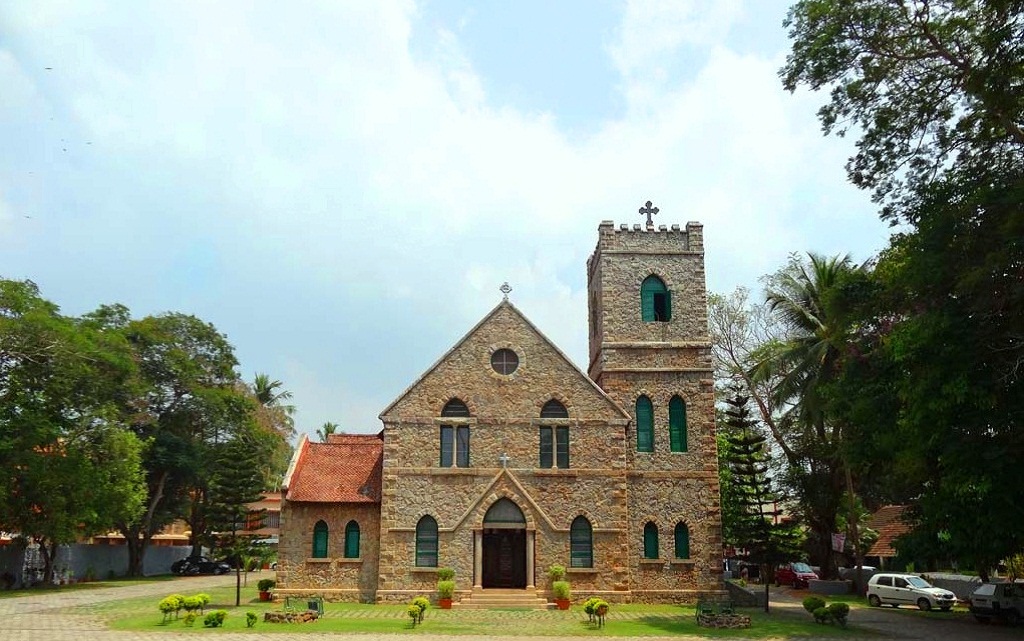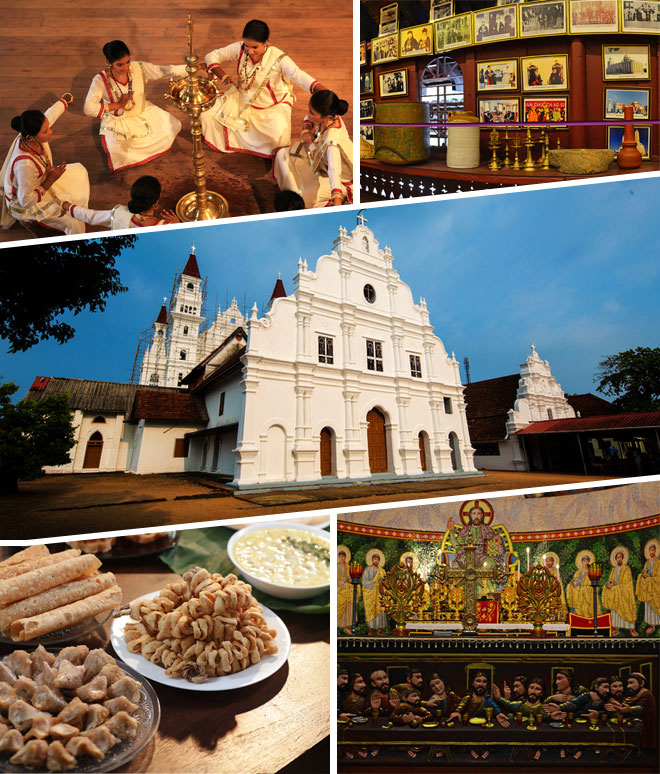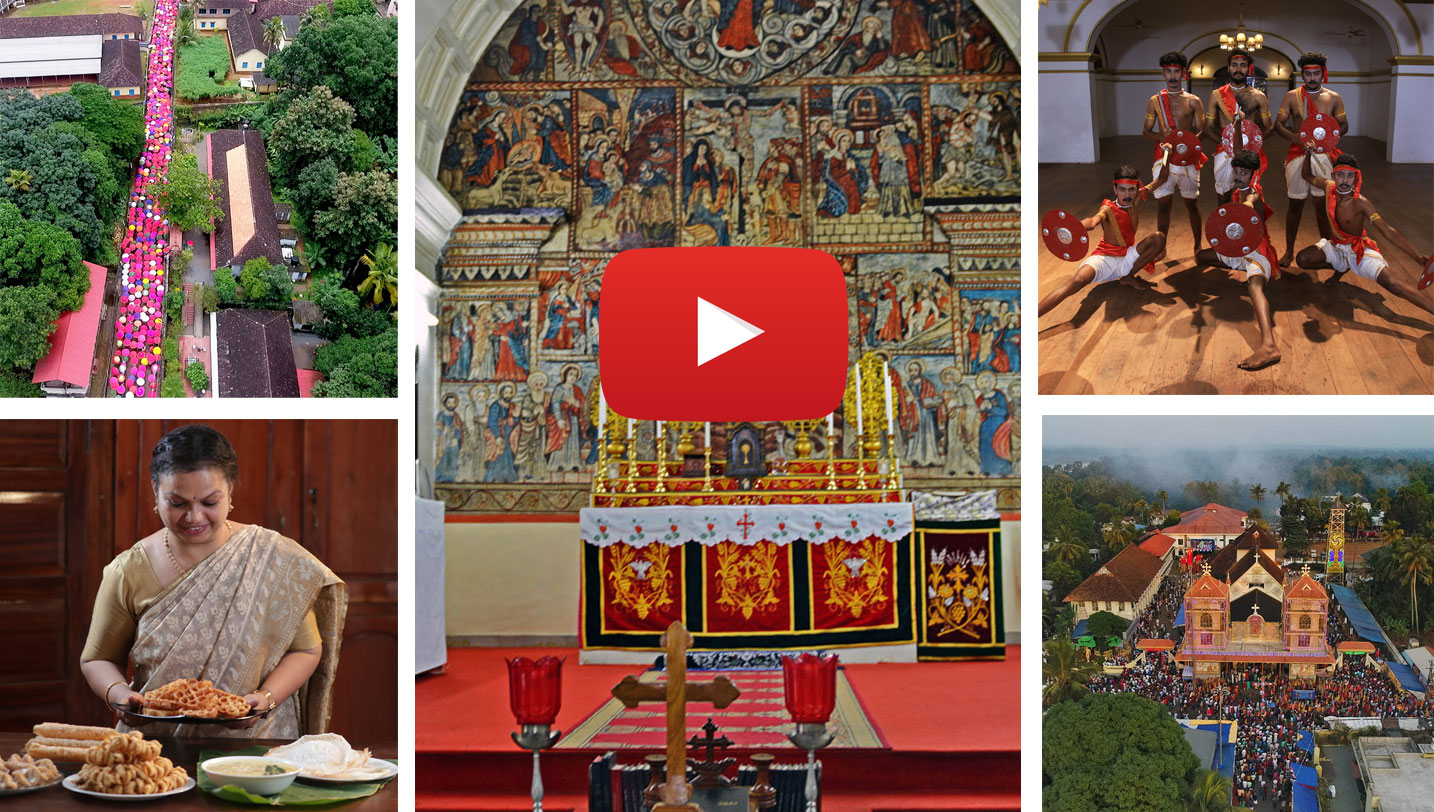Establishment of churches
_large.jpg)
Macaulay secured from the Travancore Government recognition for the missionary activities of the London Mission. London Mission was established in Travancore with the help of Col. Munroe, Macaulay’s successor. Charles Meed reached Kerala in 1817 as LMS missionary and started functioning from the circuit bungalow of Munroe in Nagercoil. Rani Lekshmi Bai donated Rs. 5,000 to the mission in 1818. A seminary was set up in Nagercoil and churches were constructed in Thanjavur, Thiruvananthapuram, and Kochi. Mrs. Charles Meed set up the first girls’ school in Travancore. The Maharaja of Travancore visited Nagercoil seminary in 1831 and invited John Robert to set up a school in Thiruvananthapuram. The Free School established by him later became the University College. As per the request of the Maharaja, a press in Nagercoil was also shifted to Thiruvananthapuram and that went on to become the Government Press. A Kunnil Mission Centre was founded on the northern side of the Fort in 1838.

Samuel Matteer (1835-1893):
Samuel Matteer, a member of the Methodist Church, was born at Belfast in Ireland in 1835. He studied at Bedford College of Theology. He reached Bombay with his wife and three children in 1859 and took charge of the Parassala Mission. The Thiruvananthapuram Mission grew fast with the arrival of Matteer. He bought the place known as Capt. Davidson’s Compound which was later known as LMS Compound in Thiruvananthapuram. His activities among the oppressed and the marginalised made him popular in Thiruvananthapuram. An environmentalist, he went on a greening drive in the LMS compound, drew pictures of the trees he planted, with elaborate notes for each one of them.
He played a pivotal role in the growth of the Mission in South Travancore for 33 years. When he returned to England due to old age and ill-health in 1890, the Thiruvananthapuram Mission had 10060 members. He died in 1893. The London Mission Society constructed a church in Thiruvananthapuram in 1906, in memory of Rev. Samuel Matteer.
He wrote two books recording his experiences in Kerala, namely, The Land of Charity, and Nature Life in Travancore. The latter was published from England in 1883. Its translation, Njan Kanda Keralam was brought out by the State Institute of Languages in 2010. Samuel Matteer has also written another book, The Gospel in South India.
It has been 211 years since the LMS started functioning in Kerala. Keralites took over its administration in 1921. In 1939, it was reorganised as southern, central and northern regions. As many as 15 Archbishops were ordained as the heads of the Archdiocese since then. Meanwhile, the Church Mission Society functioned in Central Kerala. It helped Syrian Christians to pursue religious activities.
_large.jpg)
In 1806, Claudius Buchanan came to Travancore, and wrote a book, Asiayile Christava Geveshanam. Missionaries and Syrian Christians mingled freely. Benjamin Bailey set up the CMS Press in Kottayam in 1821 and printed the Malayalam translation of the Bible and an English- Malayalam Dictionary. Henry Baker founded the CMS College in 1839. Joseph Fen encouraged Christian studies in seminaries. It was these missionaries who laid the foundation for a renaissance in the Syrian Christian community (Christava vijnanakosham, Prakasham Publications). European missionaries headed the Archdioceses in the initial stages. Rev. C. K. Jacob was appointed the first Indian Bishop in 1945.
Discussion forums and clubs:
Protestant missionaries were able to start educational activities in Travancore with the help of the Church Missionary Society. This paved the way for an intellectual renaissance and also for the formation of discussion forums, clubs, and literary associations. This further led to interactions among the educated youth. A lecture series was held in Thiruvananthapuram on literature, science, social issues and ethics at the behest of the missionaries, between 1863 and 1867. Societies of different sections of students were formed. Infant Club, Juvenile Circle, Reform Club, Malayali Union, Debating Society and Young Men’s Christian Association was formed at that time. Clubs were formed for estate workers in the eastern region. European clubs formed at that time still exist in different parts of the State with Indian names.
Owing to the concerted efforts of CMS workers such as Charles Meed, James T., Ringeltaube, John Cox, Bailey, Charles Molt, Dr. J. C. Thomson, Dr. John Lowe, White House, Mrs. Dathy, Vedamanickam and Maharajan, schools, seminaries, boarding schools, theatres, mission press, hospitals, dispensaries and libraries started functioning in Travancore.
The English also started developing plantations for growing tea, coffee, cocoa, spices, and rubber. They cleared forests and laid railway lines, roads, and bridges. All these developmental activities were the result of the initiatives started by the missionaries. Undoubtedly, they played a pivotal role in the development of the State.
Malpan residences:
The Malpan residences that existed in Angamaly, Pallipuram, Poonjar, Pala, Ollur, Karakunnam, Kuthiyathodu, Kalparambu, Chathanadu, Nagapuzha, Wadayar, Bharananganam, Changanassery and Mylakombu were wound up once the seminaries started. Fr. Carneiro who visited Kerala in 1557, records that, in addition to the Malpan residences, a university also functioned in Angamaly for theology students who aimed at higher studies, and a priest (Kathanar) interpreted the Holy Book in Syriac for nearly 50 years (Wicki, Joseph,ed. Documents Indica). A seminary for Syrian Christians was set up at Varappuzha under the aegis of the Carmelite priest Anjelo Francis, in 1682, and another one at Alangad under the tutelage of Joseph Kariyattil, in 1766.
- The Tradition of St. Thomas
- The arrival of St. Thomas
- Seven and half Churches
- Post St. Thomas arrivals
- The scenario before the arrival of Gama
- Missionary Activities
- Descriptions of St. Thomas Christians
- The Padruodo
- Portuguese Forts
- Synod of Diamper
- Latinization of Churches
- Coonan Cross Oath
- Post Koonan Kurissu
- Establishment of churches
- Starting of Seminaries
- Anglo Indians
- Migrations to Malabar

